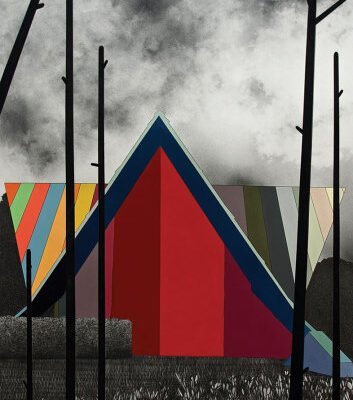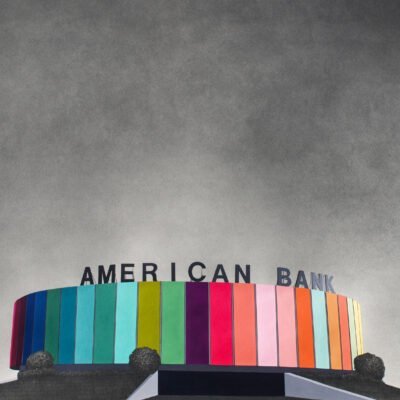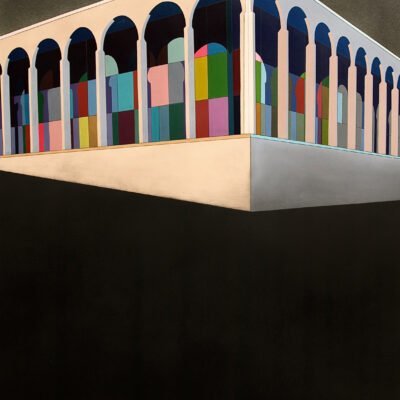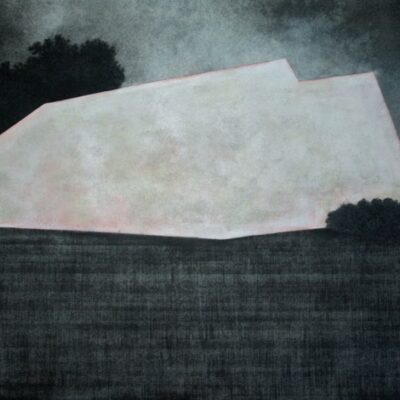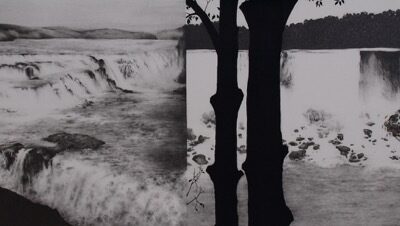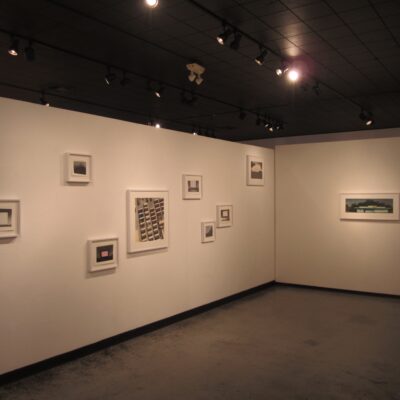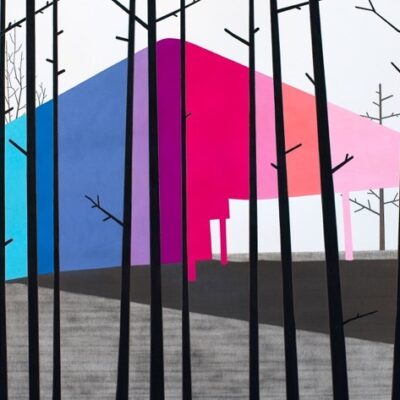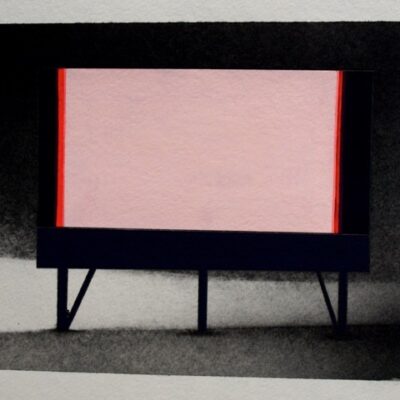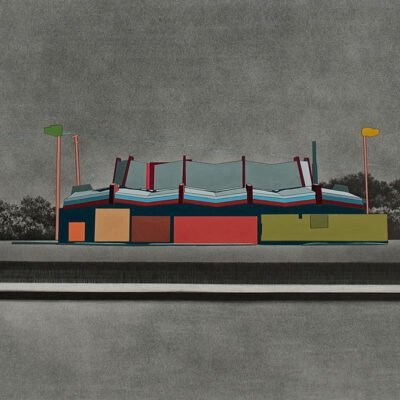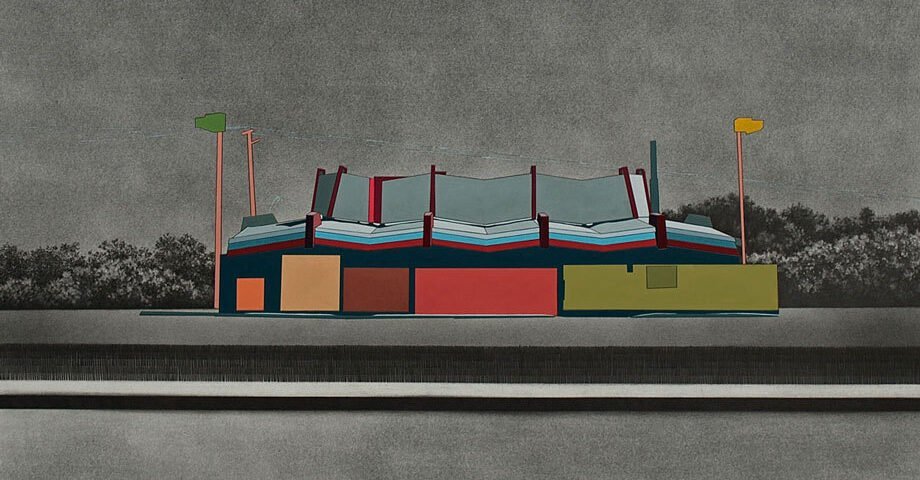

Sara Frantz
Sara Frantz’s recent work explores the contemporary built environment once-removed. Her subjects tend toward the anonymous and ubiquitous: standard commercial buildings, often ornamented with eye-catching architectural “flair”, are carefully framed by trimmed hedges and lawns.
These locations are seemingly viewed from the (never explicitly shown) roadside, which indirectly reveals that extensive travel and chance encounters with varied architectural vernaculars is an important catalyst for Frantz’s process. This point of view also presents her buildings as closed, slightly mysterious tableaux: no one enters or exits and contents are never revealed.
The sense of distance is doubled by the way that Frantz fragments and re-configures the landscape through the prism of various styles and techniques. Flat color-field painting abuts dense, overtly physical marks and seamless gradients of graphite. The effect is one of near-collage, with the parsing of techniques held in tension with the unifying structure of landscape imagery: sky, horizon, and ground. By doing this, Frantz enters conversations about once-exalted Modernist pictorial styles, entangling them with local, familiar, and banal conditions. In effect, “high” art and “low” architecture co-mingle to form an inherently fractured, and yet still-beautiful, image of both our contemporary environment and our means of picturing it.
_____________________________________________________________________________
El trabajo reciente de Sara Frantz explora el entorno construido contemporáneo que alguna vez fue eliminado. Sus sujetos tienden hacia lo anónimo y ubicuo: edificios comerciales estándar, a menudo adornados con un “estilo” arquitectónico llamativo, están cuidadosamente enmarcados por setos y césped recortados.
Estos lugares aparentemente se ven desde el borde de la carretera (nunca mostrado explícitamente), la que revela indirectamente que los viajes extensos y los encuentros casuales con diversas lenguas vernáculas arquitectónicas son un catalizador importante para el proceso de Frantz. Este punto de vista también presenta sus edificios como cuadros cerrados y ligeramente misteriosos: nadie entra ni sale y su contenido nunca se revela.
La sensación de distancia se duplica por la forma en que Frantz fragmenta y re-configura el paisaje a través del prisma de varios estilos y técnicas. La pintura de campos de color planos lindas con marcas densas y abiertamente físicas y gradientes sin costuras de grafito. El efecto es casi un collage, con el análisis de técnicas mantenidas en tensión con la estructura unificadora de las imaginería del paisaje: cielo, horizonte y suelo. Al hacer esto, Frantz entra en conversaciones sobre estilos pictóricos modernistas alguna vez exaltados, enredándolos con condiciones locales, familiares y banales. En efecto, el arte “alto” y la arquitectura “baja” se mezclan para formar una imagen inherentemente fracturada y, sin embargo, aún hermosa, tanto de nuestro entorno contemporáneo como de nuestros medios para representarlo.
